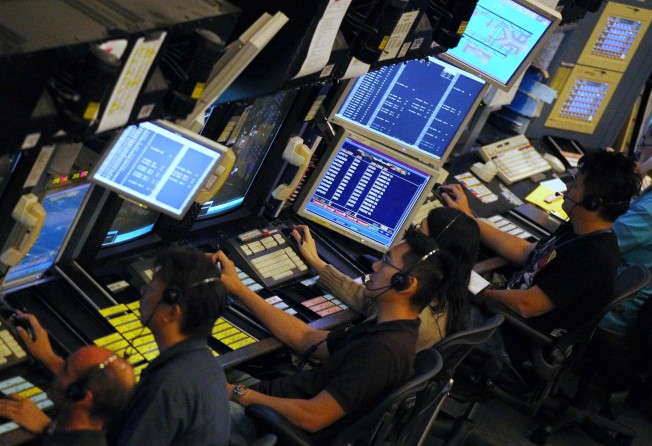Flight disappears from radar as new Hong Kong air traffic system is hit by glitch day after launch
Civil Aviation Department confirms monitor failed to display location of departing plane for 12 seconds

Safety concerns are growing over Hong Kong’s brand new and unreliable air traffic control system as aviation officials admitted a flight disappeared off a radar screen for 12 seconds last Tuesday.
The fault occurred just a day after the new flight tracking system was fully launched despite concerns over technical failures and malfunctions during its many months of testing since the summer.
Aviation regulator chiefs confirmed a controller’s radar monitor failed to display the location of a departing plane, though other screens showed the aircraft’s positioning as normal.
The Civil Aviation Department (CAD) explained that an aircraft’s position becoming temporarily unavailable was not a big problem, and controllers had backup systems to keep a check on aircraft monitoring continuously.
“The above problems were not caused by unknown errors in the new system, whereas various external factors could be involved,” the department said in the statement, adding that such problems also happened with the previous traffic control system.
“These included glitches in the communication system, external interference to radar reception and geographic factors.”
The department also said it took time to synchronise the new multiple radar signals, which could lead to image duplication on the display.
An air traffic controller source, who was heavily critical of a previous system malfunction last month, explained there was no risk to air safety because controllers had multiple systems to check the positioning of aircraft.
After a four-year delay, the HK$1.56 billion upgrade went live on Monday despite technical failures and malfunctions during a recent trial run as well as opposition from some frontline controllers.
Last month, flight radar screens froze and malfunctioned. The CAD said that there were “isolated” problems and launched a probe.
Quoting a report by its highly paid consultants, Britain’s National Air Traffic Service, which operates flights above Britain’s skies and airports, the Transport Bureau insisted last Friday that the new system was “safe, stable and reliable”.
But pilot-turned-lawmaker Jeremy Tam Man-ho, who has long doubted the safety and reliability of the upgrade, was not satisfied with the explanation by the aviation officials.
Tam said: “The new system is meant to fix all the problems of the old one. What’s the point of upgrading it if the glitches continue?”
He said he had written to the department to urge a thorough investigation and a full explanation on the incident. He said the system would remain a risk if the problems were not solved.
“Listing out possibilities of the causes is meaningless. The department should identify the cause and solve the problem. Otherwise ten flights could go off the radar next time,” he continued.
Aviation officials said in their statement that “special circumstances” would still occur in the initial phase due to the system’s complexity.
Albert Lam Kwong-yu, who was Civil Aviation Department chief from 1997 to 2004, called for manufacturers Raytheon to sort out the latest snag to hit the much-delayed and costly system.
“Only CAD engineers know the system. If they know the system but don’t understand the problem, they have to ask the manufacturer who prepared the software to explain the technical bug occurrence,” Lam said.